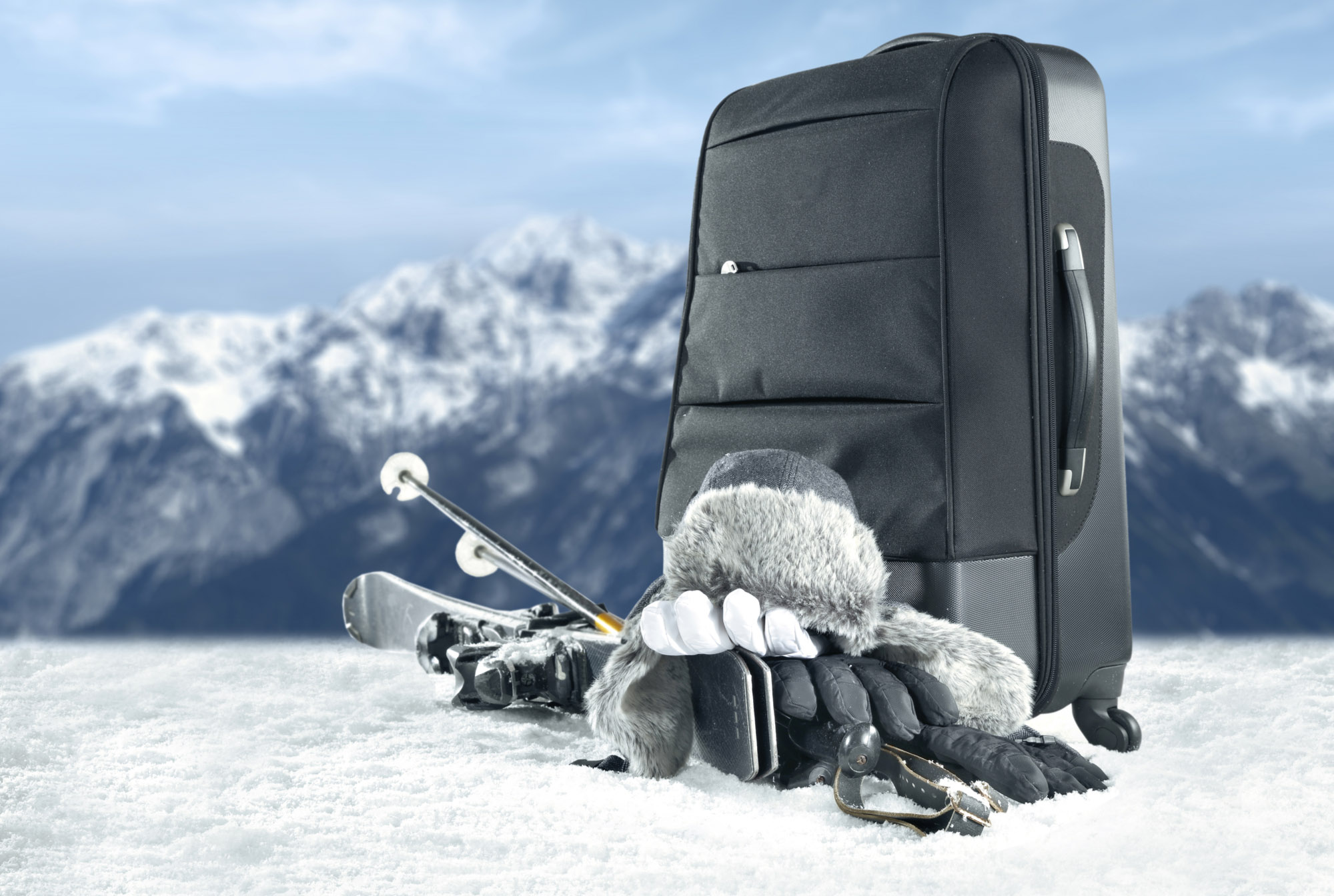Winter vacation complemented by skiing is an awesome experience. If you don't regularly go on ski vacations, we provide you with a list of everything you need to pack, and you should pay attention to, so this perfect adventure doesn't turn into a freezing cold nightmare.
Apparel
Even though the hot summer makes us to crave for a cool winter air, choosing the right ski apparel shouldn't be taken lightly. On a ski run, weather tends to change all the time, it can instantly get colder or start snowing, and you have to be ready for it.
Ski apparel should be warm, wind and waterproof. If you don't wear appropriate clothes, the coldness can badly affect your experience.
Thermal underwear
The key to feeling comfortable during the whole day is the base layer which wicks the moisture, doesn't cool you down and is effectively regulating the body temperature. Ideally, it's made of synthetic materials or wool. You'd better stay away from cotton, you'd be freezing in it once it gets wet. In our store, you find men's and also women's thermal underwear according to your individual body type and taste in design.
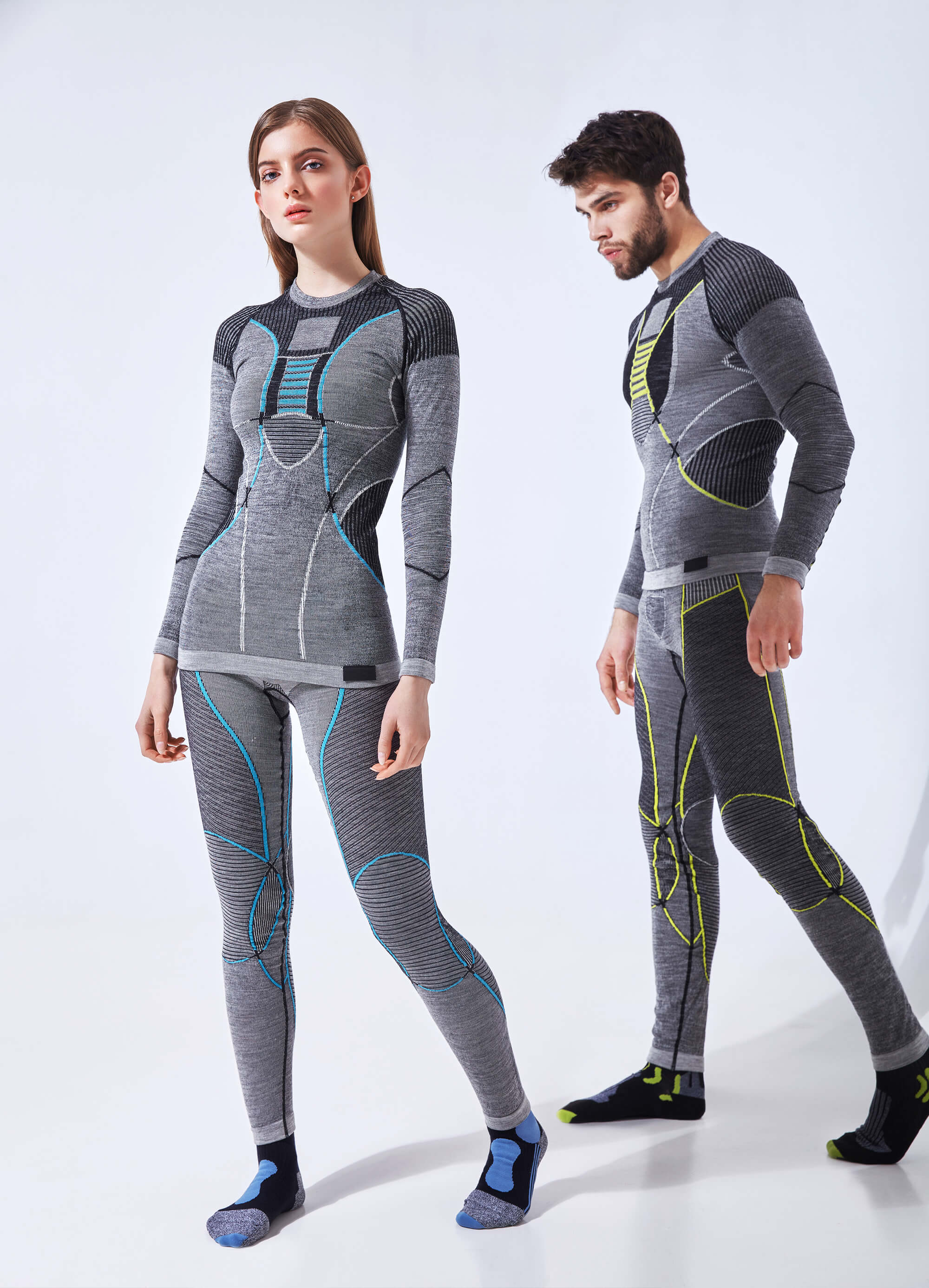
Socks
They might not be much of a gift when unwrapped under a Christmas tree, but they might save your skin while skiing. Literally. The right ski socks keep your feet dry and warm. Moreover, they have to be tight and cannot twist or coming loose, so you're not getting any blisters. They should reach all the way just below your knee. Always bring an extra pair of socks, just in case.
Mid-layer
In cold weather, you need on top of base layer another layer - a warm one. Ski T-shirt or hoodie are ideal for this. A fleece jacket or sweater also pose a viable alternative. The key is that this layer makes and keeps you warm, and the material is still breathable.
Ski jacket
A superb ski jacket, which keeps you dry, warm and protects you against ever-changing weather conditions, is vital for having a great day skiing. Choose a jacket which is breathable, as well as wind- and waterproof at the same time. Details like a small pocket at the end of a sleeve to store a ski pass are really appreciated.
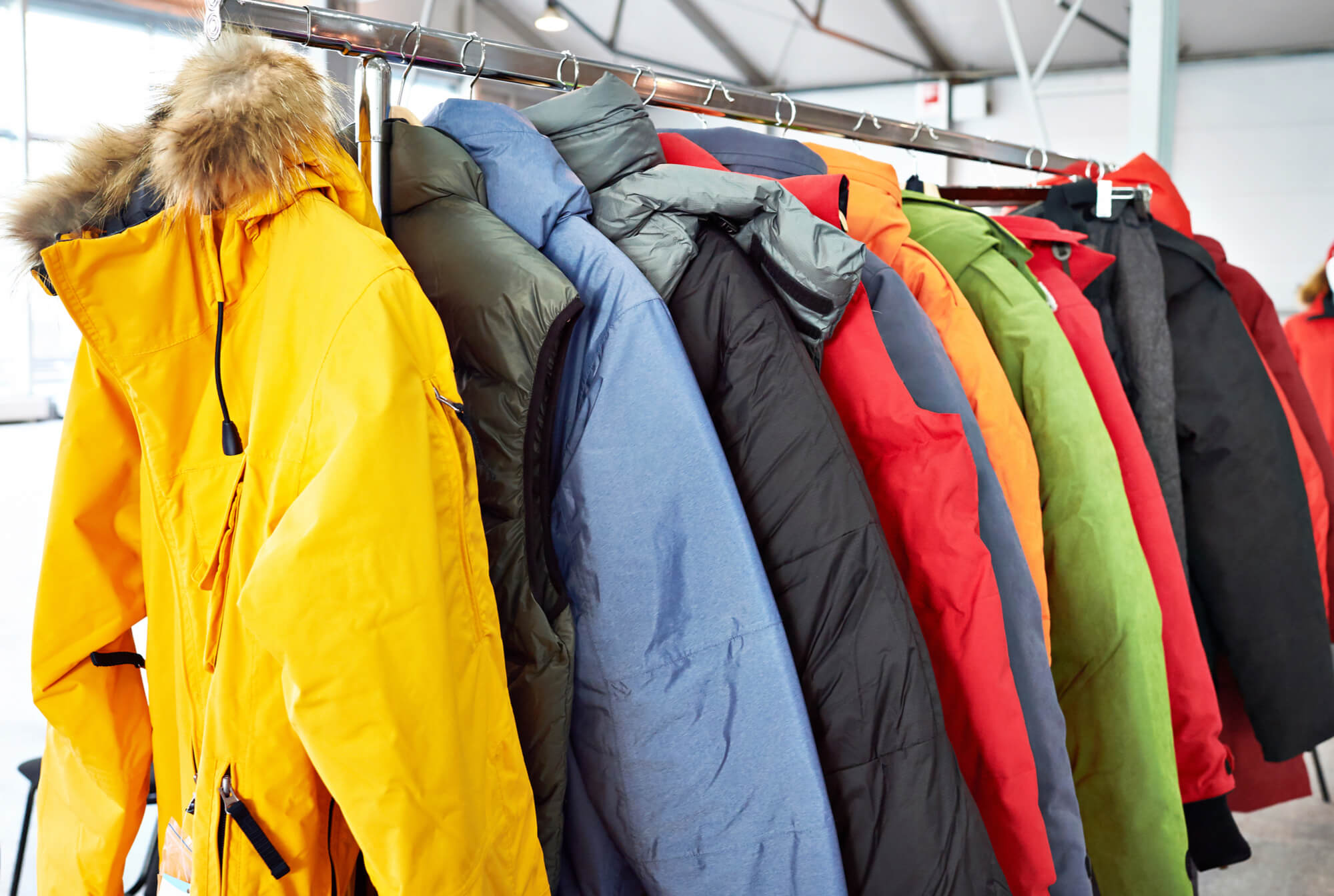
Ski pants
Proper ski pants are inseparable from ski jackets. They're often sold together as a matching set. And just as a jacket, pants should be wind- and waterproof and able to keep you warm. Zip vents come in handy if you want to regulate your temperature.
Gloves
Ski gloves play their key role. You can choose from standard five-finger ones or mittens. Whichever you choose, they need to be insulated and waterproof. Don't forget that you'll be holding ski poles with them, so they need to provide enough freedom of movement.
Beanie, balaclava ski mask and neck gaiters
Beside your body, you need to keep warm also your head. A proper ski beanie will help you out. Depending on whether you also wear a ski helmet (which we strongly recommend), you can opt for a thinner beanie that fits underneath it, or for a balaclava ski mask or a universal neck gaiter. Once again, choose a material that will keep you warm and wick the moisture.
Equipment
Once you know how to properly choose ski apparel, don't forget to pack all the necessary gear.
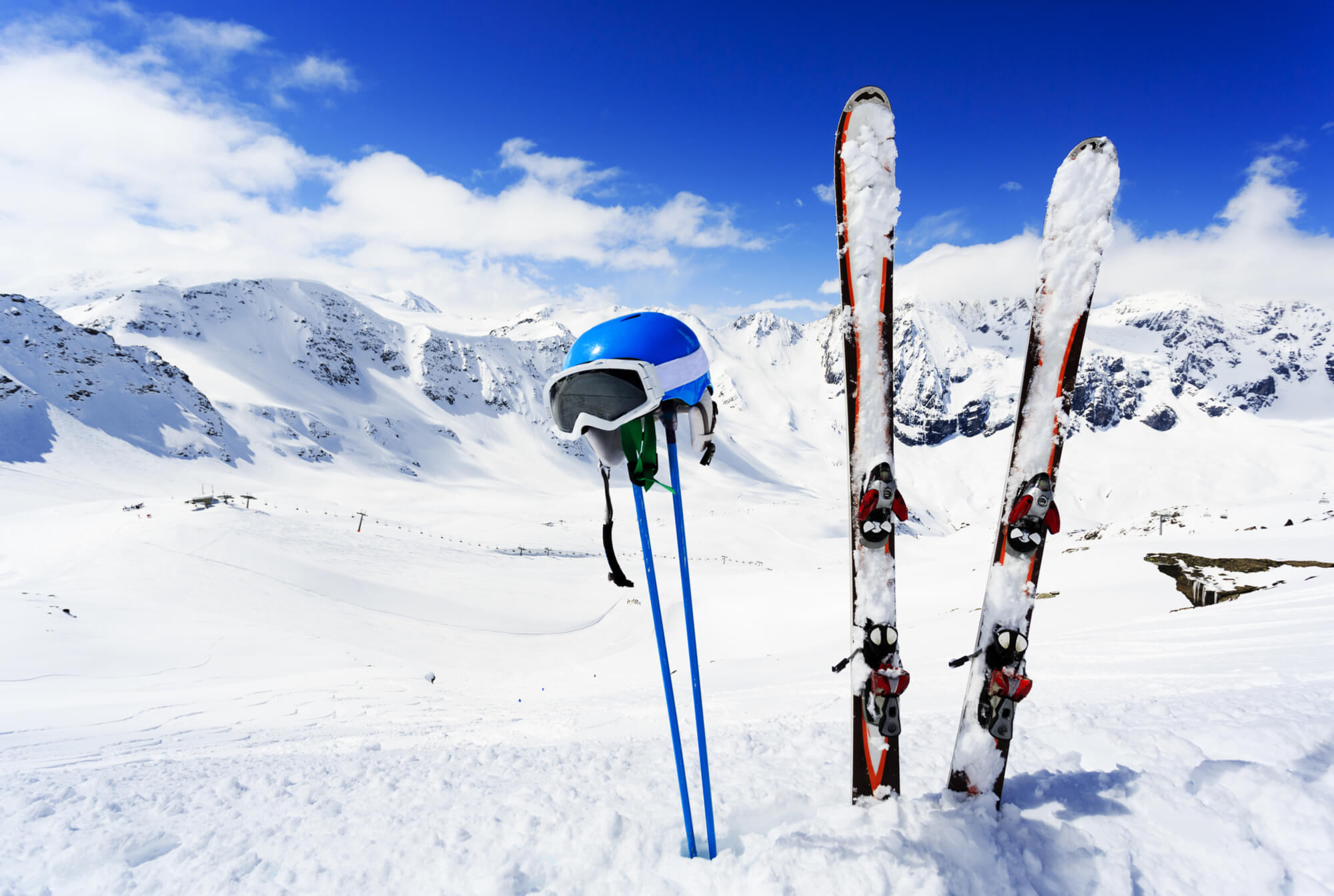
Skis with bindings
There are several fundamentals that you need to think of while choosing skis: your skills, type of skiing and the terrain which you'll be skiing on. Learn more in our guide on how to choose skis.
Usually, you can get skis with bindings which is an ideal combination for casual skiers.
Bindings are compatible with downhill skis and are easily adjustable for required size. You have to set manually DIN - a value of force in an event of a crash, which will make ski boots to release the skis. DIN setting is based on skier's weight. This feature protects you from serious injuries if you happen to crash.
Bindings also have brakes, so your skis won't "run away".
Ski boots
You shouldn't underestimate choosing the right ski footwear. You can get to know how to choose ski boots in our dedicated guide. Downhill ski boots together with a right choice of socks are crucial for your wellbeing on slopes, so you should pay an extra attention while choosing them.
Poles
Downhill ski poles are a vital part of the gear. They're used in every curve, to keep your balance and also to get rid of snow from ski boots. They're mostly made of aluminium or carbon.
Average poles come with hand straps. However, some brands offer special systems to attach them right on gloves. In that case, you need to have compatible gloves with such system.
Choosing the right size of poles is important. The size depends on your skills and type of skiing you prefer. Telescopic poles provide a great option to adjust the poles to your needs.
MUZIKER TIP:
You can get an optimal size of poles by multiplying your body height by 0.7 constant.
Helmet
Even though a ski helmet isn't a mandatory piece of equipment, we strongly recommend wearing it anyway. It protects your head if you happen to fall or crash, and it keeps your head warm as well.
Goggles
As we have mentioned before, weather can change rapidly during a ski trip - a bluebird day can change into a blizzard or fog quickly. Ski goggles with interchangeable lenses will help you out in any kind of weather. Proper UV protection is a must-have.
Accessories
Now that you know what you need to bring along for a ski trip, let’s have a look at some extra gear that will raise the level of your comfort.
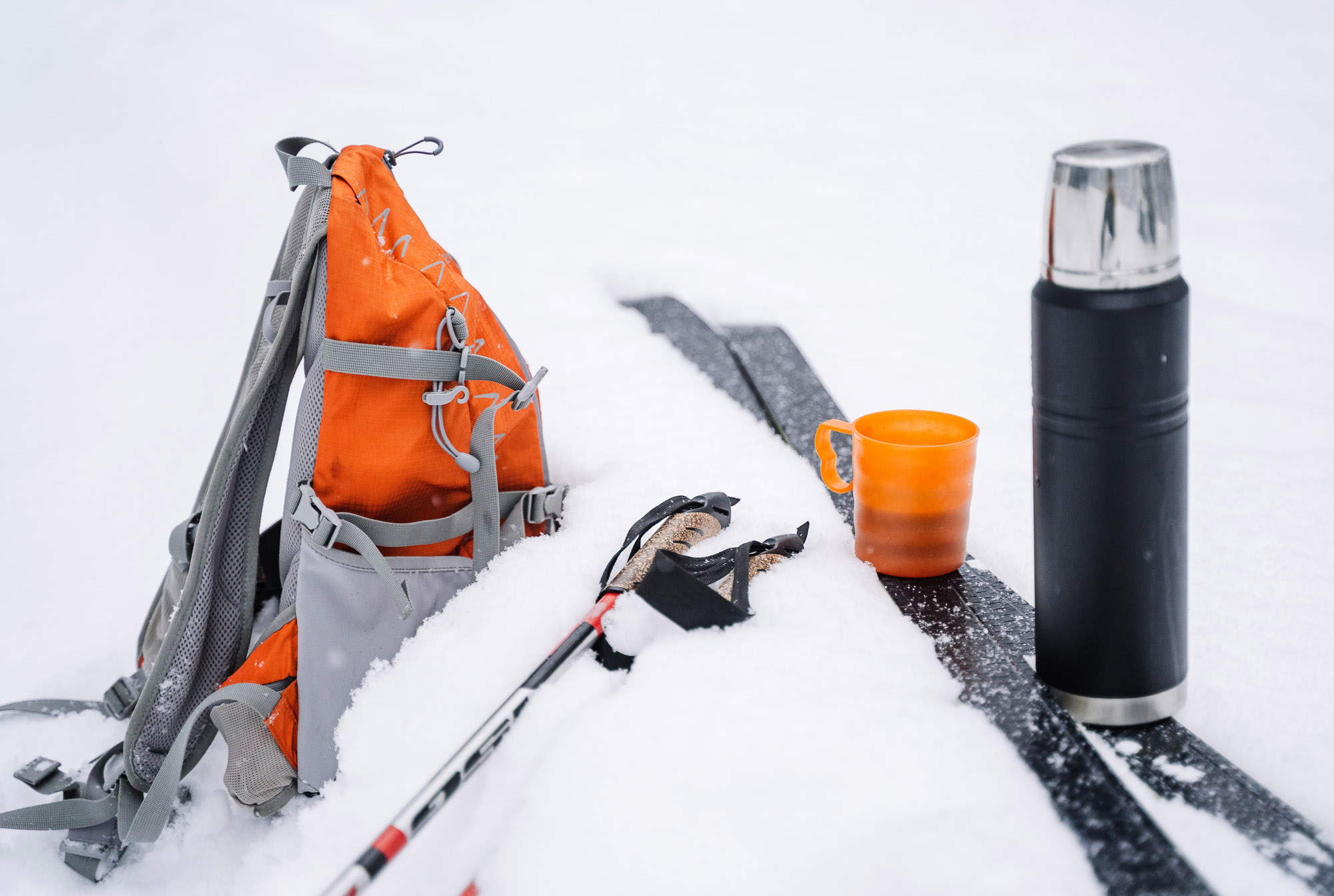
Backpack
Perhaps you might want to bring some extra stuff on a ski run. High-quality ski backpack provides, beside storage, protection of your backs and attachments to carry your skis. If you pack also a thermo mug with hot coffee or tea, a closed ski buffet can't catch you by surprise
Action camera
If you want to share your ski adventures with friends, you can add a suitable action camera to your equipment.
Useful extra accessories
You'll probably need to drive a car to get to your ski destination, so think of how you'll transport your skis safely. Roof racks and boxes are made for this.
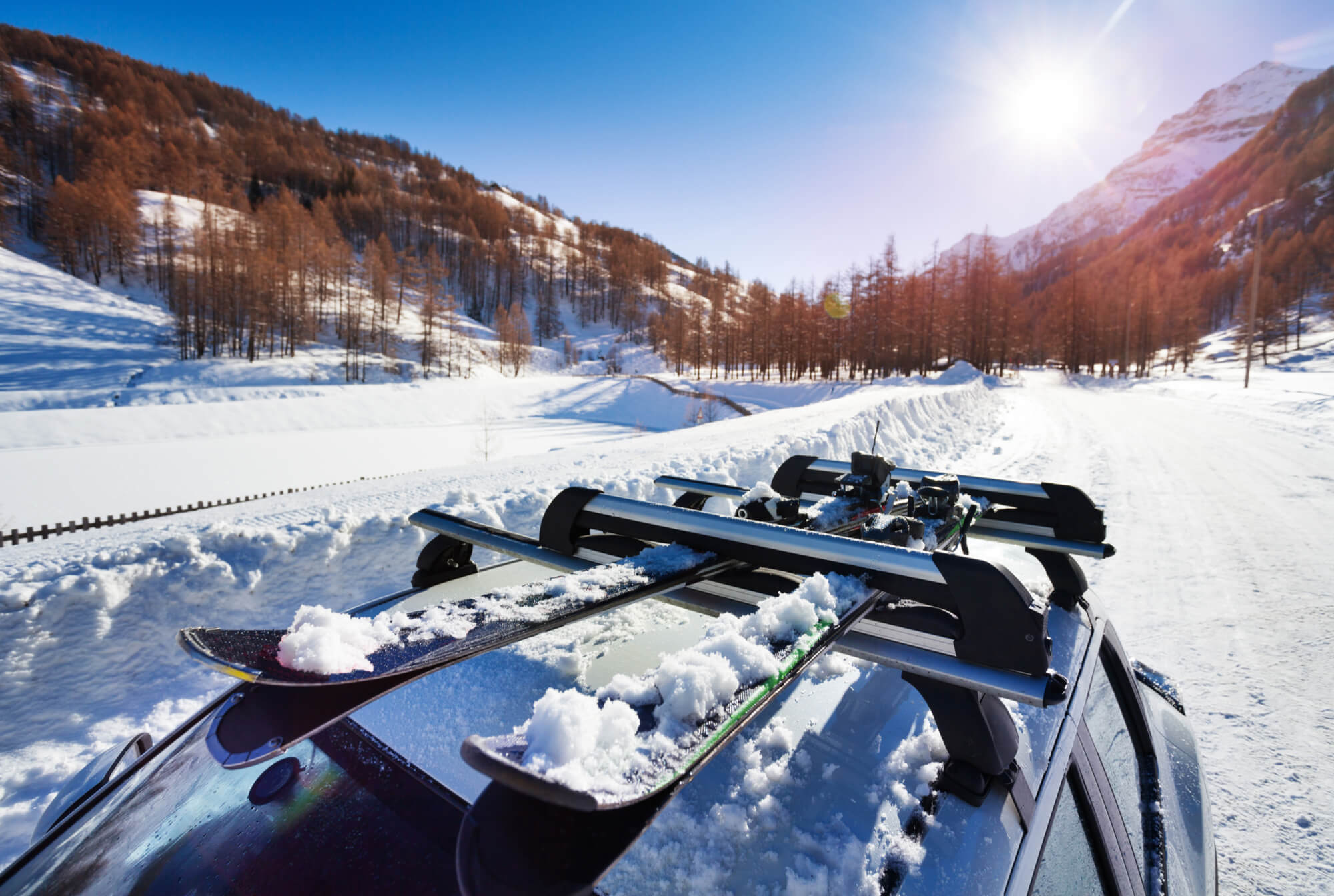
Ski bag makes carrying skis around easier, as well as storing them and protecting them from external conditions. Ski poles fit in too, so you won't leave them home accidentally.
It's a good idea to have a special ski boots bag. Maybe you could fit in it a helmet and goggles too. Or you can opt for an extra ski helmet bag. Always put your goggles in a case so they won't scratch. Thus, your entire ski gear is neatly packed and ready to go.
If you're going to ski for multiple days, you should also bring a shoe dryer with you. As we have said before - keeping your feet dry and warm is key to have an amazing day skiing.
Now you know what all you need to bring to a ski trip so you won't miss anything. Go and shred the mountain.
 Musical Instruments
Musical Instruments



 Water Sports
Water Sports




 ee
ee

